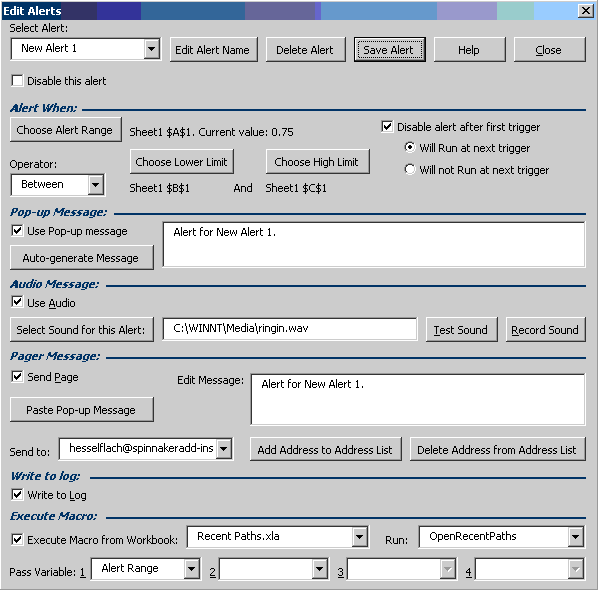Flood Alerts Explained: What They Mean And How To React

Table of Contents
Understanding Different Flood Alert Levels
Different regions may use slightly varying terminology, but the core principles remain consistent. Understanding the severity levels of flood alerts is the first step in effective flood preparedness.
Flood Warning: Immediate Action Required
-
Key characteristics: A Flood Warning signifies that flooding is occurring, or is expected imminently. Significant flooding is expected, posing a serious threat to life and property. Emergency services are likely already responding. Water levels are rapidly rising, and the situation is critical.
-
Action to take:
- Evacuate immediately if instructed by authorities. Do not delay.
- Move valuable items and possessions to higher ground.
- Stay informed through official channels, such as local news, emergency alerts, and government websites. Listen for updates on radio or television.
- Avoid driving through flooded areas; even shallow water can be deceptively dangerous.
Flood Alert: Prepare for Potential Flooding
-
Key characteristics: A Flood Alert indicates that flooding is possible. The risk of flooding is increasing, and preparations should be made. Monitor the situation closely, as conditions may rapidly deteriorate. River levels are rising, and the potential for flooding is significant.
-
Action to take:
- Check your flood risk by using online tools provided by your local authorities or environmental agencies. Many websites offer interactive maps showing areas at risk.
- Prepare your emergency kit (see below for details).
- Identify safe evacuation routes and have a backup plan.
- Consider moving valuable items to higher floors or a safe location.
Flood Watch: Be Aware of Potential Flooding
-
Key characteristics: A Flood Watch means that conditions are favorable for flooding, but it's not imminent. The risk is lower than with a Flood Alert or Warning, but you should still remain vigilant and monitor the situation. Weather conditions are conducive to flooding, such as heavy rainfall or snowmelt.
-
Action to take:
- Stay informed by regularly checking local news, weather forecasts, and official government websites for flood updates.
- Prepare your emergency plan and ensure your family knows what to do.
- Review your flood insurance coverage and understand your responsibilities.
How to Receive Flood Alerts
Staying informed is critical. Here are several ways to receive timely flood alerts:
-
Sign up for official alerts: Most regions have warning systems in place. Register your contact information with your local emergency management agency or environmental agency to receive timely notifications via text message (SMS), email, or phone call. This is often the most reliable source of information.
-
Monitor weather forecasts: Regularly check reliable weather sources such as your national meteorological service for updates, including radar images and river level information. Pay attention to rainfall totals and flood warnings specifically issued for your area.
-
Utilize mobile apps: Many weather and emergency apps provide real-time alerts and flood information. These apps often offer location-based alerts, ensuring you receive warnings relevant to your specific area.
Essential Flood Preparedness Steps
Proactive planning can significantly reduce the impact of flooding.
Develop a Family Emergency Plan
- This should include:
- Designated evacuation routes and meeting points.
- Contact information for all family members.
- A plan for pets.
- An out-of-state contact person for communication if local networks are down.
Create a Flood Emergency Kit
- Your kit should include:
- Water (at least one gallon per person per day for several days).
- Non-perishable food supplies.
- First-aid kit and essential medications.
- Flashlights, batteries, and a portable radio.
- Blankets and warm clothing.
- Important documents (stored in waterproof containers).
- Copies of insurance policies.
Protect Your Property
- Take steps to minimize flood damage:
- Install flood barriers or sandbags if necessary.
- Elevate electrical appliances and valuable items.
- Move furniture and other belongings to higher ground.
- Understand your home's flood insurance coverage and ensure adequate protection.
Know Your Evacuation Route
- Identify safe routes and alternate paths in case of road closures.
- Familiarize yourself with local evacuation centers and shelters.
Conclusion
Understanding and reacting to flood alerts is critical for minimizing the risk to life and property. By familiarizing yourself with different alert levels, registering for official alerts, and taking proactive preparedness steps, you can significantly reduce the impact of flooding. Remember to stay informed, monitor weather conditions, and always prioritize safety. Don't delay – prepare for potential flood alerts today and protect your family and belongings. Learn more about how to prepare for and react to flood alerts now and safeguard your future.

Featured Posts
-
 Tim Rice Pens Lyrics For Land Of Sometimes A Lion King Reunion
May 26, 2025
Tim Rice Pens Lyrics For Land Of Sometimes A Lion King Reunion
May 26, 2025 -
 Allagi Pleysis Gia Tin Mercedes O Verstappen Ektos Planon
May 26, 2025
Allagi Pleysis Gia Tin Mercedes O Verstappen Ektos Planon
May 26, 2025 -
 The Hunger Games Prequel Ralph Fiennes And Kiefer Sutherland In The Running For Coriolanus Snow
May 26, 2025
The Hunger Games Prequel Ralph Fiennes And Kiefer Sutherland In The Running For Coriolanus Snow
May 26, 2025 -
 Lock Up Season 5 Episode Guide And Action Breakdown
May 26, 2025
Lock Up Season 5 Episode Guide And Action Breakdown
May 26, 2025 -
 Understanding The Influence Of Russell And The Typhoons On Modern Music
May 26, 2025
Understanding The Influence Of Russell And The Typhoons On Modern Music
May 26, 2025
Latest Posts
-
 Adverse Doping Test Result Munguia Responds With Denial
May 31, 2025
Adverse Doping Test Result Munguia Responds With Denial
May 31, 2025 -
 Munguias Positive Drug Test The Fighters Response
May 31, 2025
Munguias Positive Drug Test The Fighters Response
May 31, 2025 -
 Boxer Munguia Rejects Doping Claims After Positive Test Result
May 31, 2025
Boxer Munguia Rejects Doping Claims After Positive Test Result
May 31, 2025 -
 Munguia Denies Doping Allegations Following Adverse Test
May 31, 2025
Munguia Denies Doping Allegations Following Adverse Test
May 31, 2025 -
 Adverse Drug Test Munguia Responds With Denial
May 31, 2025
Adverse Drug Test Munguia Responds With Denial
May 31, 2025
